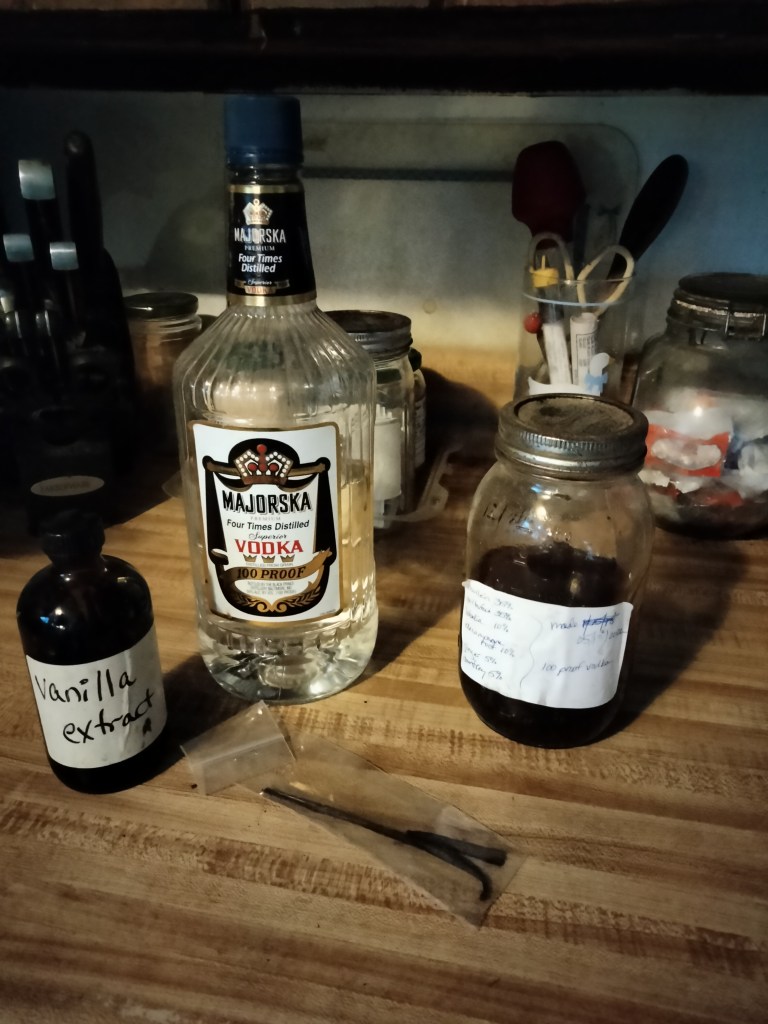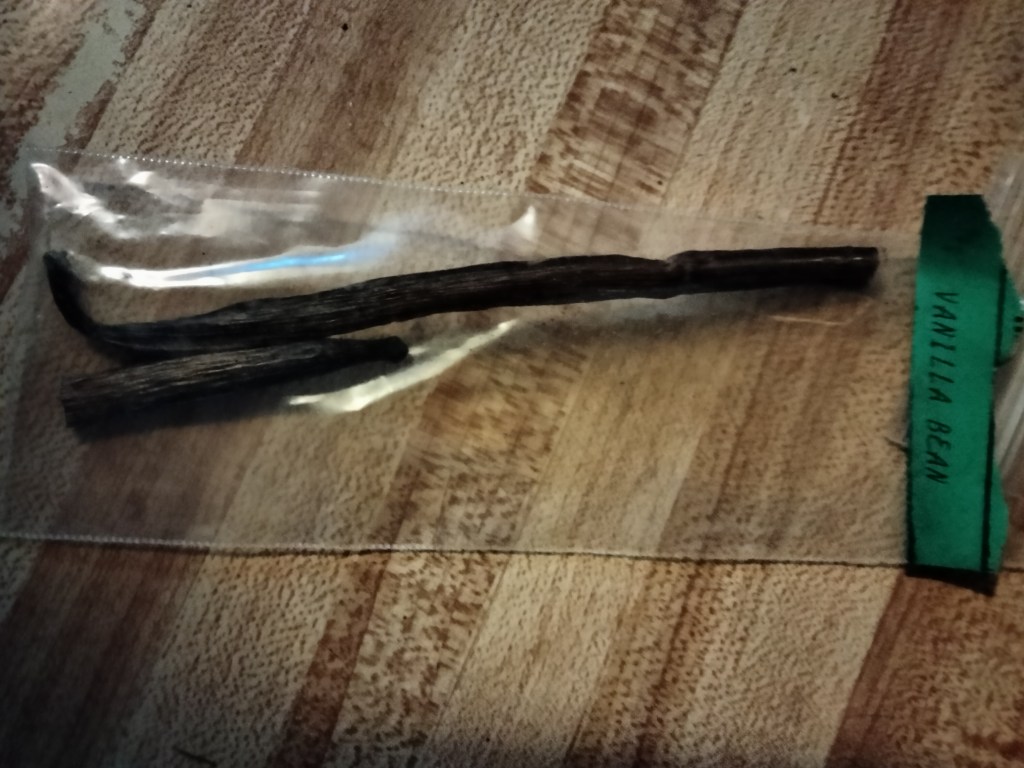“And God said, Behold, I have given you every herb bearing seed, which is upon the face of all the earth, and every tree, in the which is the fruit of a tree yielding seed; to you it shall be for meat” (Genesis 1:29)
Though it is a couple of weeks’ late, as promised, this week’s Wednesday Weed Walk isn’t so much about a specific herb but, about a way to preserve the herbs for future use when not in their growing, or harvest, seasons.
A tincture is, in my opinion anyway, the easiest way to make medicine. You can tincture a single herb, or blend them. I tend to do the latter…except when I’m making my own vanilla extract (recipe below).
To tincture herb(s), you need a clean, sterile container (repurposed glass Mason jars work well!) and, preferably, 100 proof alcohol of some kind. I use 100 proof vodka to tincture my herbs but other mediums, such as rum, would also work. You can use an 80 proof and broaden the selection of spirits but, you will need a few capsules of vitamin E oil added against spoilage, as anything less than 100 proof may mold. Apple cider vinegar (ACV), also with added vitamin E oil, will work for short-term storage. With ACV, you will have to store your tinctures in the refrigerator and they will only keep for 2 weeks, at best. When tincturing in 100 proof alcohol, your tinctures remain shelf-stable for up to 2 years. However, if you, or someone you love, is susceptible to alcoholism, or for young children, ACV may be the better option for you.

Tincturing is simple. You measure your herbs into a jar and pour the alcohol, or ACV, over them until they are covered with the liquid. Then you put a lid on the jar, label it with the contents, ingredients, the date you started the tincturing, and the batch #. This last isn’t 100% necessary but, if you decide to sell herbal products, having a running batch # is helpful should any adverse reactions occur. Depending upon the medium you used, you place the tincture into the refrigerator, or in a dark cabinet (too much light will destroy the healing properties), and shake it daily for two weeks. At the end of those two weeks, you can either leave the spent-herbs inside, and strain as you use it, or strain them now, at the two week mark, into another clean and sterile jar, or dark-colored bottle.
You can use fresh herbs, or dried. If using dried, remember the herbs will have a higher concentration of medicinal properties to them. 1/3 of the amount of dried herbs suffices. So, if you normally measure 1 tablespoon of, say, fresh chamomile, you would only use a teaspoon of the dried.
Making medicine is the part I like the best but, you can also use this method to create extracts for the kitchen, such as vanilla. To make vanilla extract, you will need a dark jar/bottle of some kind (you can find online, or many herb shops will sell them), or a dark cabinet to store them if using clear glass. It doesn’t need to be a large bottle. A couple of ounces suffices. Think of the tiny bottles that vanilla extract comes in at the grocery store. Anyway, take 2-3 vanilla beans, slice them in half lengthwise, and put them in the bottle (if bottle is short, you may also need to cut them in half the other way, too). Fill the bottle with 100 proof alcohol, screw on the cap, give it a shake and let it tincture for two weeks. Once the two weeks are over, however, in this case, you will NOT be straining the liquid into another container. Instead, keep the vanilla beans in the liquid. As you use it, you can simply top it off with more 100 proof alcohol, and/or add more vanilla beans over time. Also, in this case, the ACV will NOT work. However, any concerns over the alcohol content should be unfounded as the alcohol burns off in the cooking/baking process.

This same method will work for almonds, lemon peels, etc. too.
May God bless you & keep you!

” Depending upon the medium you used, you place the tincture into the refrigerator, or in a dark cabinet ”
Does this mean a refrigerator if ACV, and a cabinet if alcohol?
Also, what are the ratios of herb to medium? If a tablespoon of fresh herb, then how much medium?
Hello, Kathy…yes, you would store tinctures with ACV in the fridge but alcohol-based tinctures can remain in a cabinet (to keep them out of the light). If you’re tincturing just one herb, measurements don’t have to be so precise. In a pint Mason jar, USING DRIED HERBS, I’d fill it 1/3 – 1/2 with herbs then pour in your medium to top (leave 1/4 – 1/2 headspace; you’re not sealing but you do want room to shake plus the herbs will absorb some of the medium so you want to allow for that). If fresh herbs, allow them to dry-wilt on a paper towel for maybe 45 minutes and then fill the jar to the top with the herbs. You can cut the herbs before putting them in the jar and then add the medium, making sure herbs are completely submerged. Hope this helps!
It sure does! Thanks 😊